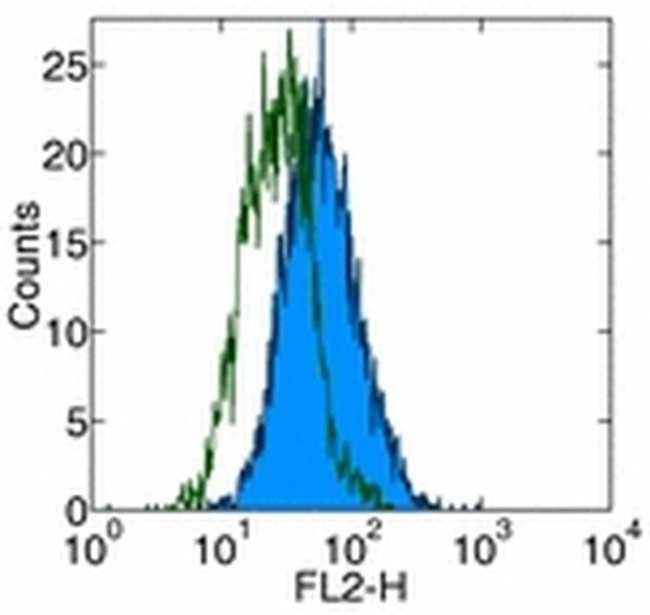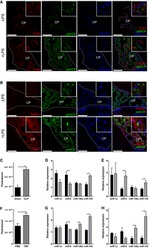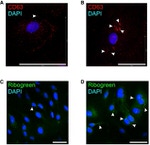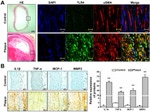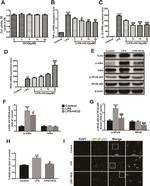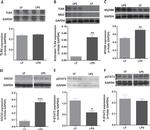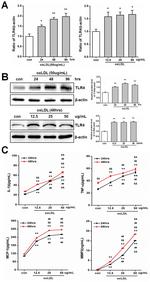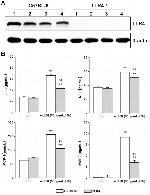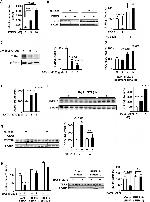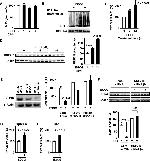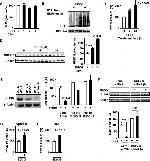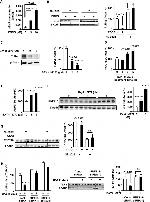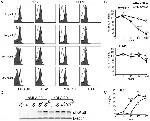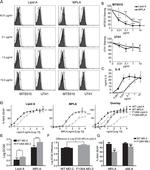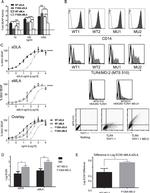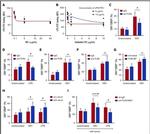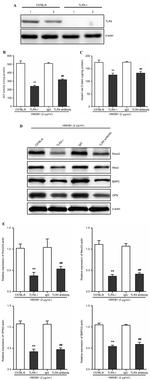Search Thermo Fisher Scientific
Invitrogen
TLR4/MD-2 Complex Monoclonal Antibody (MTS510), Functional Grade, eBioscience™
Product Details
16-9924-82
Species Reactivity
Published species
Host/Isotype
Recommended Isotype Control
Class
Type
Clone
Conjugate
Form
Concentration
Purification
Storage buffer
Contains
Storage conditions
Shipping conditions
RRID
Product Specific Information
Description: The MTS510 monoclonal antibody reacts with the mouse Toll-like receptor 4 (TLR4)/MD-2 complex. At least ten members of the Toll family have been identified. This family of type I transmembrane proteins is characterized by an extracellular domain with leucine-rich repeats and a cytoplasmic domain with homology to the type I IL-1 receptor. Two of these receptors, TLR2 and TLR4, are pattern recognition receptors and signaling molecules in response to bacterial lipoproteins and have been implicated in innate immunity and inflammation. TLR4 physically associates with MD-2, and together with CD14, this complex is responsible for LPS recognition and signaling. In the mouse, TLR4 is expressed by thioglycolate-elicited peritoneal macrophages. Incubation of peritoneal macrophages with LPS results in down regulation of surface TLR4/MD-2. The TLR4 gene is defective in C3H/HeJ and C57BL/10ScCr mice, both of which have been well characterized as hyporesponders to LPS.
The MTS510 monoclonal antibody co-immunoprecipitates MD-2 (~30 kDa) and TLR4 (~100 kDa), and preferentially reacts with TLR4 that is associated with MD-2. In comparison, binding of the UT41 monoclonal antibody occurs with and without formation of the TLR4/MD-2 complex. Please contact eBioscience Technical Support for further information.
Applications Reported: MTS510 has been reported for use in flow cytometric analysis and inhibition of LPS-induced cytokine production.
Applications Tested: The MTS510 antibody has been tested by flow cytometric analysis of mouse peritoneal exudates cells. This can be used at less than or equal to 1 µg per test. A test is defined as the amount (µg) of antibody that will stain a cell sample in a final volume of 100 µL. Cell number should be determined empirically but can range from 10^5 to 10^8 cells/test. It is recommended that the antibody be carefully titrated for optimal performance in the assay of interest.
Storage and handling: Use in a sterile environment.
Filtration: 0.2 µm post-manufacturing filtered.
Purity: Greater than 90%, as determined by SDS-PAGE.
Endotoxin Level: Less than 0.001 ng/µg antibody, as determined by LAL assay.
Aggregation: Less than 10%, as determined by HPLC.
Target Information
MD-2 is a member of the Toll/interleukin-1 receptor (TIR) family, a group of proteins that include the Toll-like receptors (TLRs). TLRs are signaling molecules that recognize different pathogen-associated molecular patterns (PAMPs) and serve as an important link between the innate and adaptive immune responses. TLR4, the major signaling receptor for lipopolysaccharide (LPS), requires the binding of MD-2 to its extracellular region for maximal response to LPS. The specificity of this response is determined by the species of MD-2; e.g., human MD-2 transfected into mouse cells can cause mouse TLR4 to react to LPS analogs that are normally antagonistic to human but not mouse TLR4.
For Research Use Only. Not for use in diagnostic procedures. Not for resale without express authorization.
Bioinformatics
Protein Aliases: ARMD10; CD284; ESOP-1; lipopolysaccharide response; Ly-96; Lymphocyte antigen 96; myeloid differentiation factor-2; myeloid differentiation protein-2; Protein MD-2; TLR-4; TOLL; Toll-like receptor 4
Gene Aliases: ESOP-1; Esop1; Lps; Ly87; Ly96; MD-2; MD2; Ran/M1; Rasl2-8; Tlr4
UniProt ID: (Mouse) Q9JHF9, (Mouse) Q9QUK6
Entrez Gene ID: (Mouse) 17087, (Mouse) 21898

Performance Guarantee
If an Invitrogen™ antibody doesn't perform as described on our website or datasheet,we'll replace the product at no cost to you, or provide you with a credit for a future purchase.*
Learn more
We're here to help
Get expert recommendations for common problems or connect directly with an on staff expert for technical assistance related to applications, equipment and general product use.
Contact tech support
